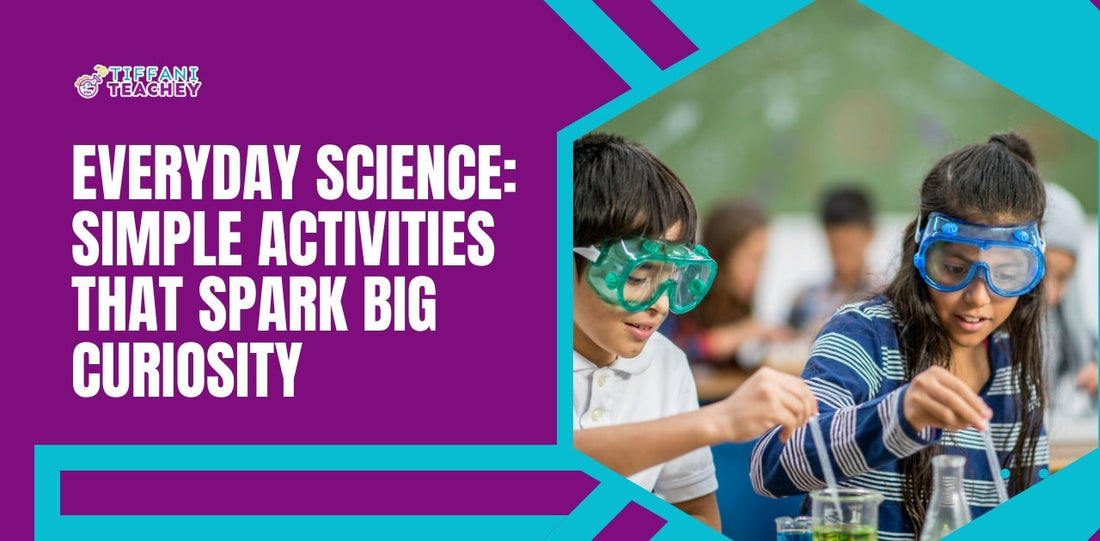
Everyday Science: Simple Activities That Spark Big Curiosity
Share
Science isn't just something that happens in labs or classrooms—it’s happening all around us, every single day. The key to unlocking a love of science in kids isn’t always in expensive kits or complex lessons. It’s in creating moments that inspire wonder, exploration, and "aha!" moments using what’s already within reach.
Whether you’re dealing with summer boredom, looking to supplement classroom learning, or just want to connect with your child in a meaningful way, science activities offer a powerful—and fun—way to do just that.
1. Turn Boredom Into Discovery
The next time your child says, “I’m bored,” hand them a challenge instead of a screen. Create a simple “Science Jar” with slips of paper that say things like:
- “Make a volcano with baking soda and vinegar.”
- “Build a boat out of foil and see how many coins it can hold.”
-
“Design a parachute for an egg using household items.”
Not only does this get them thinking critically, but it also turns downtime into discovery time.
2. Make Your Kitchen the Lab
You don’t need fancy tools to be a scientist. Your kitchen is already a lab waiting to be explored. Try activities like:
- Testing acidity with red cabbage pH indicators
- Making ice cream in a zip-lock bag
-
Observing how yeast makes dough rise
Ask simple questions: “What do you think will happen if…?” Then test it together. These kinds of experiments teach cause and effect, observation, and patience—all in a way that feels like play.
3. Explore Outside: Nature Is a Science Classroom
Ants, clouds, shadows, leaves—all of it has something to teach. Give your child three tasks:
- Observe something closely
- Record what they see
-
Ask a question about it
Take a notebook or magnifying glass on a walk and let your child be a backyard biologist, meteorologist, or geologist for the day.
4. Make It Messy—And Memorable
Some of the best science activities are messy: slime, bubble experiments, elephant toothpaste. These aren’t just fun—they’re deeply engaging. The sensory aspect helps kids retain what they’re learning, and the unexpected outcomes keep them coming back for more.
Keep a “messy science bin” at home stocked with baking soda, droppers, food coloring, and paper towels. When in doubt, just add vinegar!
5. Connect Science to Real Life
Show kids how science solves everyday problems. Fixing something around the house? Let them help. Measuring a room for new curtains? That’s spatial math. Checking tire pressure? Physics in action. These experiences help them see that science isn’t separate from life—it’s part of it.
Ask questions like, “Why do you think that works the way it does?” or “What would happen if we did it a different way?” These questions help them begin to think like scientists
Conclusion: Let Curiosity Lead
At the heart of every great scientist is a question. And at the heart of every great science activity is a child who is allowed to wonder, to test, to try, and even to fail. Science isn’t about memorizing facts—it’s about learning how to think.
So this week, instead of planning every moment, leave some space for curiosity. Whether your child builds a bridge out of toothpicks or investigates why soap bubbles pop, they’re not just having fun—they’re developing the tools to ask better questions and seek deeper answers.
That’s the kind of learning that lasts a lifetime.
